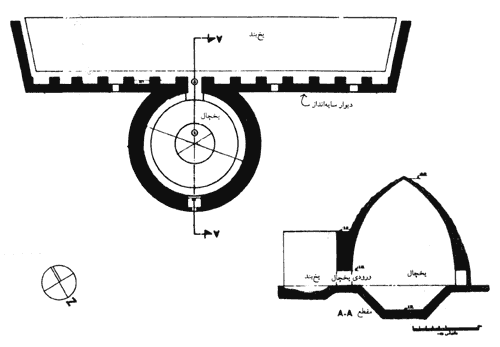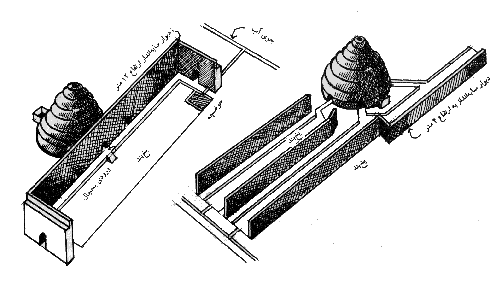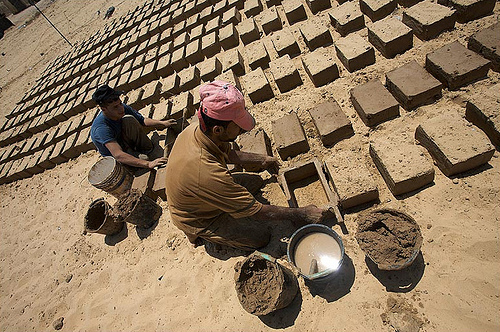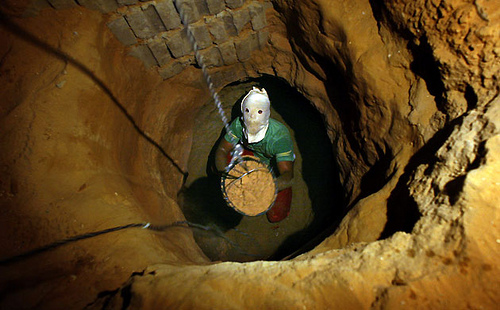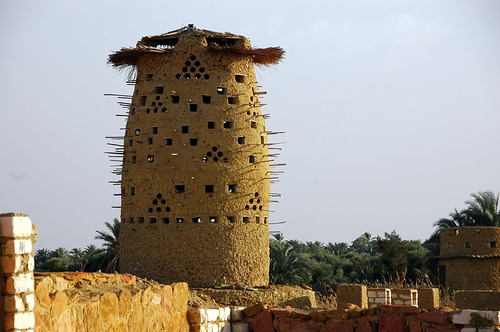Afghan Earth Works
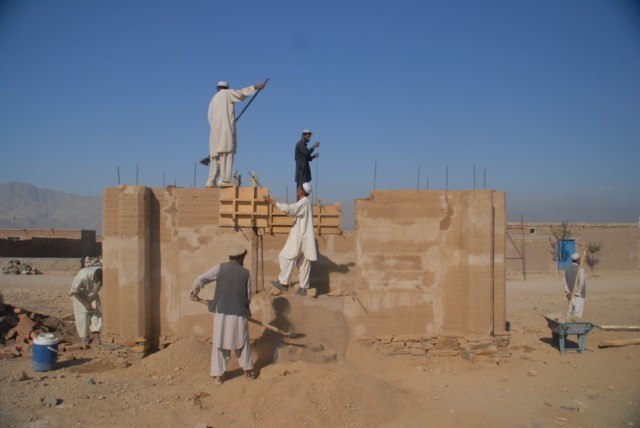
Afghan Earth Works is a non-profit organization working at a variety of sites around Afghanistan. Their goals are simple. They are to create valued, decently paid jobs; to show how earth, the most readily available material, may be used to create comfortable buildings which their occupants will cherish and that they can repair themselves; and to teach updated construction methods so that the buildings are both durable in Afghanistan’s harsh climate, and safe in the earthquakes which periodically devastate parts of the country.
Earth Architecture | Mud, Stone & Shale Conference
THE UNIVERSITY OF HADRAMUT FOR SCIENCE & TECHNOLOGY | MUKALLA & DA‘WAN MUD BRICK ARCHITECTURE FOUNDATION Are pleased to announce the Second Conference on Mud Brick Architecture to be held in Hadramut in 2011 under the title: Earth Architecture | Mud, Stone & Shale
The conference will provide a platform to discuss and exchange information amongst international architects, academics, participants and foundations on the condition of past and future cities with innovative and creative projects in construction and design including a wide spectrum from Chile to India. This intends to create an important link and exchange between North and South, east and west, where the technology architectural language and environment of earth architecture requires to be more seriously and effectively implemented. The fact that it is being held in the heart of the kingdom of mud brick architecture, Valley of Hadramut, serves a significant case in point.
Venue: Say’un, Wadi Hadramut | Republic of Yemen
Dates: 28 February – 4 March 2011
Official Language English & Arabic for presentation- (Papers in French will be accepted for publication in the Conference proceedings).
Conference Themes:
1. Architectural Rehabilitation and Development
2. Modern & Contemporary Buildings: Innovation, Construction and Design (Case Studies and Projects)
3. Yemeni Cities & Vernacular Architecture at Risk: Dilapidation, Destruction & Flood Damage
4. Future Use of Restored Residential Clusters & Heritage Landmarks
5. Environmental Issues: Sustainable Planning Methods & Guidelines
Attending international participants include leading specialists, academics and architects from India, Chile, Portugal, Italy, UK, Morocco, Algeria, Egypt and France. Queries please contact Salma Samar Damluji at: salmasamar@damluji.org
Hassan Fathy is The Middle East’s Father of Sustainable Architecture
Green Prophet has railed against projects like Dubai Burj Tower. They have pounded our chests at the audacity of Masdar City’s “zero” footprint claim, and have decried the potential consequences of unsustainable approaches to building and planning. “USD22 billion” for a building project and “sustainable” simply don’t belong in the same sentence.
Egyptian architect Hassan Fathy died in 1989 but left behind a legacy of 160 building projects ranging from small projects to large-scale communities complete with mosques and schools. His impact can still be felt from Egypt to Greece and even New Mexico, where in 1981 he designed the Dar Ar-Salam community. Fathy received several awards for his work, including the Aga Khan Award for Architecture in 1980, and founded The International Institute for Appropriate Technology in 1977.
Bio-Engineered Sand Brick
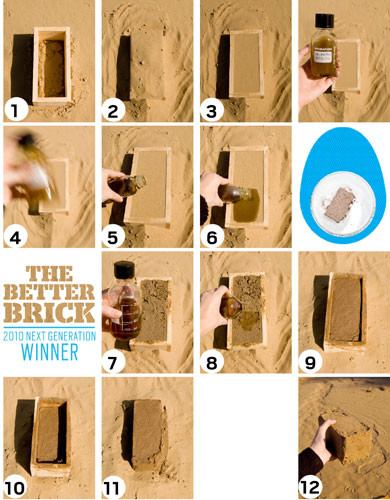
The winner of the 2010 Metropolis Next Generation Design Competition proposes a radical alternative to the common brick: don’t bake the brick; grow it. In a lab at the American University of Sharjah, in the United Arab Emirates, Ginger Krieg Dosier, an assistant architecture professor, sprouts building blocks from sand, common bacteria, calcium chloride, and urea (yes, the stuff in your pee). The process, known as microbial-induced calcite precipitation, or MICP, uses the microbes on sand to bind the grains together like glue with a chain of chemical reactions. The resulting mass resembles sandstone but, depending on how it’s made, can reproduce the strength of fired-clay brick or even marble. If Dosier’s biomanufactured masonry replaced each new brick on the planet, it would reduce carbon-dioxide emissions by at least 800 million tons a year. “We’re running out of all of our energy sources,” she said in March in a phone interview from the United Arab Emirates. “Four hundred trees are burned to make 25,000 bricks. It’s a consumption issue, and honestly, it’s starting to scare me.” Read more…
Kibbutz Lotan
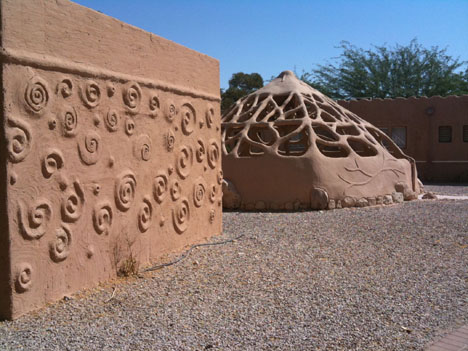
Kibbutz Lotan was founded in 1983 in the Arava Desert in Israel, with the discovery of a significant source of groundwater. Lotan sits at a low point in a valley, hundreds of feet above an aquifer. Over the years, Lotan has become known for its example in sustainability, proving that an inspired group of people can create community and habitat in even the harshest of environments, by being resourceful.
Yakhchal: Ancient Refrigerators

Yakhchal in Yazd Province
By 400 BC, Persian engineers had mastered the technique of storing ice in the middle of summer in the desert. The ice was brought in during the winters from nearby mountains in bulk amounts, and stored in a Yakhchal, or ice-pit. These ancient refrigerators were used primarily to store ice for use in the summer, as well as for food storage, in the hot, dry desert climate of Iran. The ice was also used to chill treats for royalty during hot summer days and to make faloodeh, the traditional Persian frozen dessert.
Aboveground, the structure is comprised of a large mud brick dome, often rising as tall as 60 feet tall. Below are large underground spaces, up to 5000m³, with a deep storage space. The space often had access to a Qanat, or wind catchand often contained a system of windcatchers that could easily bring temperatures inside the space down to frigid levels in summer days.

NimVar Yakhchal
The Yakhchal have thick mud brick walls that are up to two meters thick at the base, made out of a special mortar called s?rooj, composed of sand, clay, egg whites, lime, goat hair, and ash in specific proportions, and which was resistant to heat transfer. This mixture was thought to be completely water impenetrable.
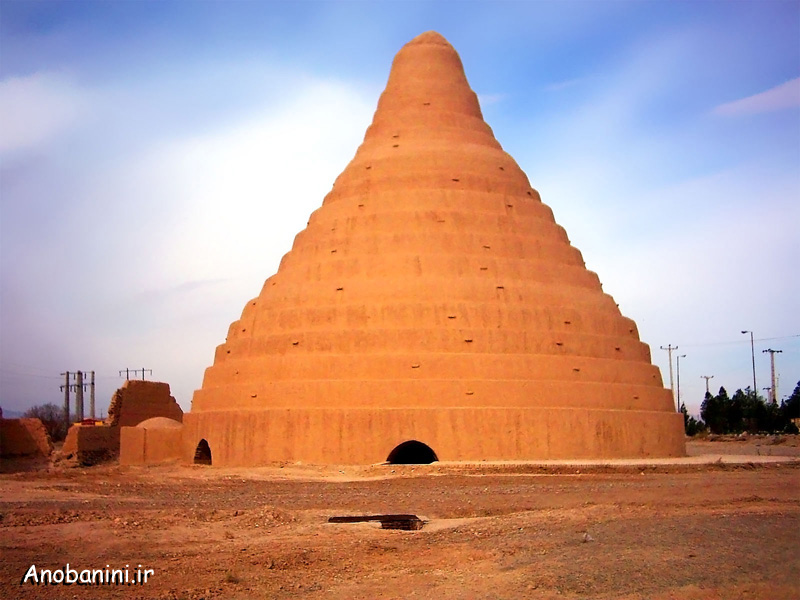
Meraji Yakhchal
The massive insulation and the continuous cooling waters that spiral down its side keep the ice stored there in winter frozen throughout the summer. These ice houses used in desert towns from antiquity have a trench at the bottom to catch what water does melt from the ice and allow it to refreeze during the cold desert nights. The ice is broken up and moved to caverns deep in the ground. As more water runs into the trench the process is repeated.
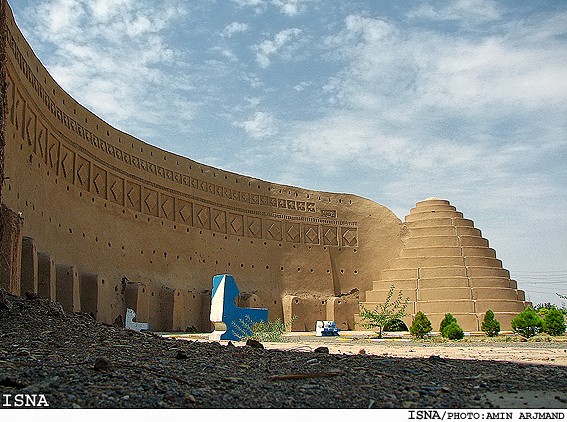
The twin ice-pits on Sirjan, Kerman Province, are surrounded by high walls and were constructed 108 years ago with mud-brick, the ice-pits are surrounded by high walls.
Gaza Mud Brick Houses as Inverted Tunnels
Previously we reported that the Israeli siege on Gaza led to citizens constructing their houses with mud brick due to a lock on billions of dollars in reconstruction funds pledged by the international community. The ingenuity also stems from a resource created by the excavation of border tunnels, primarily in the Rafah region, used to transport goods from Egypt. When tunnels are dug, mounds of mud are created, and this mud is considered prime for the production of mud bricks. Under the siege, and due to Gazans’ loss of hope that reconstruction projects will rebuild the thousands of houses and institutions destroyed by the Israeli occupation, particularly during its New Year offensive, many homeowners have begun to explore the mud alternative.

Photo credit (left), Photo credit (right)
“Hamas is actually supporting the mud-brick housing movement and has pledged money and assembled a special engineering committee to investigate a pilot project that will test a multistory school to determine just how safe and plausible building more widespread with mud brick can be. Of course, all of this has spawned a new temporary economy in tunnel mud removal and brick manufacturing, and the engineering itself is quite antiquated but none the more outdated. They’re using combinations of mud, sand, salt, and straw, and in some cases rubble to forge bricks and build basic homes. Some have already been said to have withstood elements of winter rains and harsh summer sun….It’s almost as if the tunnels had been turned inside out, sort of poetically unraveled overland as a result of the Israeli assaults, and now offer the dual benefit of both relief housing while also keeping the essential corridors of underground commerce alive. In some ways it’s just good old-fashioned poetic justice bound with some gritty irony. “ writes Subtopia.
Several videos about the mud brick houses are available on YouTube. In one, the daughter of Nidal Eid, a 35 year-old who constructed his own mud brick house, states, “Daddy makes everything out of mud, but he can’t make me mud toys.” In another video it is suggested that building with mud brick is “a step back in time.” But is it a step back, or a step forward, creating a Palestinian identity through architecture drawn from tunnels that “represent the frontier of Gaza’s fight for geo-economic autonomy…amazing blueprints as uprooted spaces edited into fresh new infrastructure now in plain view”, as mentioned in the Subtopia essay. “Mud is valuable”, mentions a builder of a mud brick house in another video.
[Gaza’s Mud Brick Homes | Gaza’s Gritty Mixture of Dirt, Despair Produces Houses of Mud | Mud, mud, glorious mud. Nothing quite like it for beating the Israeli blockade | Subtopia: Over the Siege ]
Syrian Beehive Houses
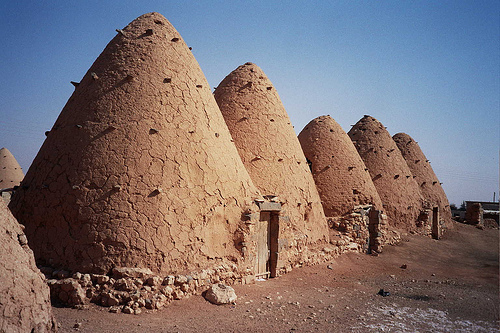
Designed for the desert climate, the beehive homes keep the heat out in a few ways. Their thick mud brick walls trap in the cool and keep the sun out as well (beehive homes have very few, if any, windows). The high domes of the beehive houses also collect the hot air, moving it away from the residents sleeping at the bottom of the house.
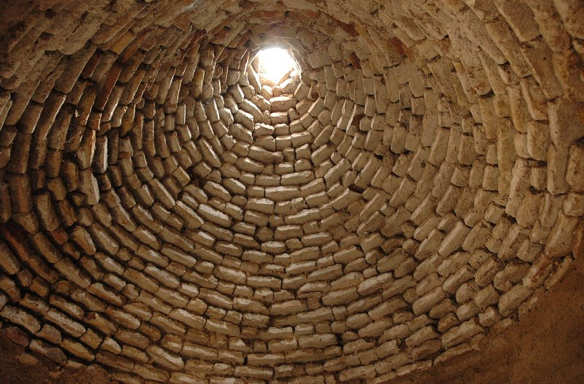
Inside, its high dome serves to collect the hotter air, and outside to shed rainfall instantly, before the brick can absorb it and crumble. Its thick roof-cum-wall is an excellent low-velocity heat-exchanger, and keeps interior temperatures between 85° and 75° F. while outside noon-to-midnight extremes range from 140° to 60°.
Egyptian Pigeon Houses
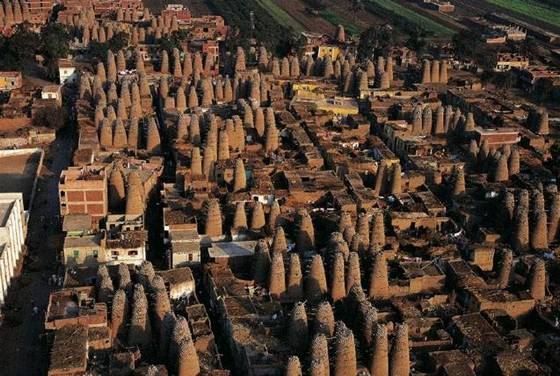
Pigeon houses at Mit Gahmr, Egypt
Pigeon is a part of the daily diet in many parts of Egypt and Pigeon houses, or dovecotes, are constructed from mud brick create an artificial mountainous topography. The droppings are also a valuable source of fertilizer and the houses are so ubiquitous that they are also part of the Egyptian national identity. The dovecote typology can be found throughout the world and Earth Architecture has previously featured the palomares of Spain.

Interestingly, the Egyptian pigeon houses remind one of the recent work of architect Vicente Guallart, who in his project The Re-Naturalization of Territory, attempts to create what could be considered as dovecotes for biotechnology and cinema in Tarragona, Spain.

